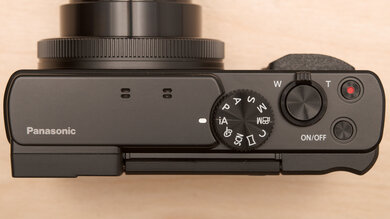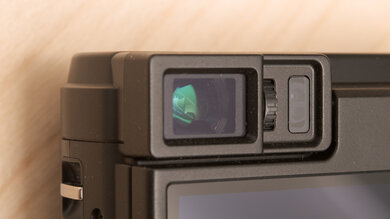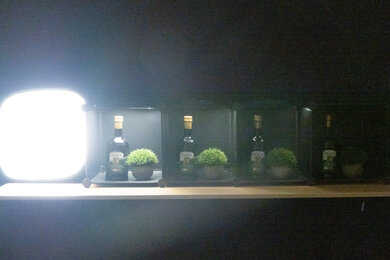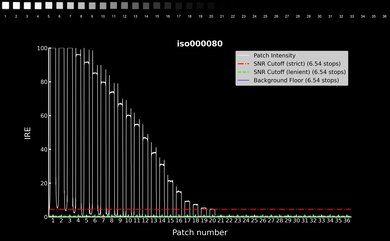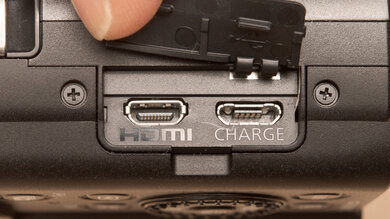The Panasonic LUMIX ZS80 is a compact point-and-shoot camera with a portable design that makes it easy to bring with you on the go. It has a small handgrip, a flip-out screen, and a versatile zoom range. For casual photographers on the go who want a simple compact with a lot of zoom, it should do the trick without breaking the bank, although it suffers from the limitations of its small sensor.
Our Verdict
The Panasonic LUMIX ZS80 is okay for travel photography. Image quality is okay straight out of the camera, but the camera is limited by its small sensor. Its photo autofocus system does a great job tracking moving subjects and keeping them in focus, but it can lose track of faster-moving subjects. The built-in lens has a long zoom range, which gives you some versatility to capture far-off subjects. The camera is also very portable, though its battery life may not be long enough to last long days on the go.
-
Portable design.
-
Impressive photo autofocus system.
-
Screen not really bright enough to read in direct sunlight.
-
Limited dynamic range.
The Panasonic LUMIX ZS80 is mediocre for landscape photography. JPEG image quality is decent, but its built-in lens doesn't let in a lot of light due to its narrow max aperture, so it isn't well-suited to low-light shooting, which isn't helped by its poor noise handling at high ISO settings. The camera's small sensor also means it has a very limited dynamic range, so it can't capture a wide range of detail in high-contrast shots.
-
Impressive photo autofocus system.
-
Screen not really bright enough to read in direct sunlight.
-
Limited dynamic range.
The Panasonic LUMIX ZS80 is okay for sport and wildlife photography. It has a very long zoom range that makes it easy to capture far-off subjects. However, its built-in lens isn't very sharp or fast, so it's not great for low-light situations. Its photo autofocus system does an impressive job tracking fast-moving subjects and offers decent image quality. However, it takes a while to clear its buffer, which can be disappointing if you want to freeze the action with burst photography. It also isn't the most comfortable camera to shoot with.
-
Impressive photo autofocus system.
-
Takes a long time for the photo buffer to empty.
The Panasonic LUMIX ZS80 is good for vlogging. This camera is incredibly portable, and its handy flip-out screen lets you see yourself while you record. It also does a great job smoothing out camera shake while you record handheld in FHD, though its performance is disappointing if you record in 4k. Unfortunately, the video quality is disappointing, so video footage doesn't look very sharp or detailed.
-
Portable design.
-
Flip-out screen.
-
Good video stabilization.
-
Disappointing video quality.
-
Inadequate at smoothing out camera shake while walking in 4k.
The Panasonic LUMIX ZS80 isn't intended for studio video. Video quality in 4k and FHD is disappointing, resulting in footage that isn't very sharp or detailed. It doesn't offer many inputs for videography accessories, so you can't connect a microphone or headphones to monitor your audio. While it does a decent job tracking moving subjects with its video autofocus in FHD, its autofocus system performs much worse in 4k.
-
Easy-to-use menu system.
-
Disappointing video quality.
-
Inadequate video autofocus performance in 4k.
The Panasonic ZS80 is poor for action video, though it isn't designed for this use. The manufacturer doesn't advertise this camera as water-resistant, and video quality in 4k and FHD is disappointing, so video doesn't look very sharp or detailed. It also doesn't offer many frame rate options in FHD, so it isn't suitable for slow-motion clips. That said, it has a portable design and can help smooth out camera shake if you're recording in 4k and FHD.
-
Portable design.
-
Disappointing video quality.
-
Not a lot of frame rate options in FHD.
-
Not water-resistant.
The Panasonic ZS80 has poor RAW image quality. Its dynamic range is very limited, so you'll lose a lot of detail when trying to capture high-contrast scenes. It also performs poorly in low light, with noisy RAW files and a max ISO of 3200, which gives you less flexibility to adjust your exposure in darker lighting conditions.
-
Limited dynamic range.
-
Poor low light performance.
- 6.9 Travel Photography
- 5.8 Landscape Photography
- 6.2 Sport & Wildlife Photography
- 7.2 Vlogging
- 6.0 Studio Video
- 3.9 Action Video
Performance Usages
- 4.9 Raw Photo
Changelog
- Updated Feb 24, 2025: We've converted this review to Test Bench 0.13. We've added new tests for Video Dynamic Range and Luminosity Patch Detection. You can learn more about these updates in the changelog.
- Updated Jan 29, 2024: Added text to the 'Raw Photo Performance' verdict box.
- Updated Jan 29, 2024: Converted to Test Bench 0.12.1.
- Updated Aug 31, 2023: We've updated the 'Differences Between Variants' box to add info about a newer variant of the ZS80.
- Updated Apr 05, 2023: Converted to Test Bench 0.12.
Check Price
Differences Between Sizes And Variants
The Panasonic LUMIX ZS80 is available in 'Black' and 'Silver'. We tested the 'Black' variant but expect both color variants to perform the same. You can see the label for the model we tested here.
The ZS80 has since been replaced with a newer version, which can be found under the model code 'ZS80D', but the cameras are functionally identical.
If you come across another version, please let us know in the discussions so we can update our review.
Compared To Other Cameras
The Panasonic LUMIX ZS80 is a better value option than the Canon PowerShot SX740. Unlike the Canon, it can capture RAW images and has a small electronic viewfinder, making it a bit more versatile. Plus, it has a better battery life and more effective autofocus. However, its zoom range is a bit shorter than that of the Canon.
Test Results
Comments
Panasonic LUMIX ZS80: Main Discussion
Let us know why you want us to review the product here, or encourage others to vote for this product.
Update: We’ve converted this review to Test Bench 0.13. We’ve added new tests for Video Dynamic Range and Luminosity Patch Detection. You can learn more about these updates in the changelog.




